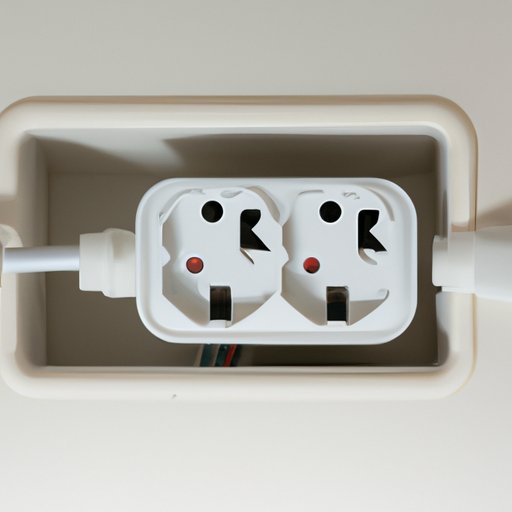Introduction
Ground Fault Circuit Interrupter (GFCI) outlets are designed to keep people safe by providing protection against electric shock and fire hazards. But what happens when these outlets trip, preventing you from accessing power? This article provides an in-depth look at why GFCI outlets trip and what you can do to prevent it from occurring.

Understanding the Functionality of GFCI Outlets
A GFCI outlet is a type of receptacle that has built-in circuitry to detect current imbalances between the hot and neutral wires. It works by monitoring the amount of electricity flowing through the circuit and comparing it to the amount of electricity returning back to the source. If there is an imbalance, the GFCI will trip, disconnecting the power and preventing potential electric shock or fire hazards.
The technology behind GFCI outlets is known as Ground Fault Circuit Interrupter technology. This technology is designed to detect small differences in current flow, even if they are as small as 4 to 6 milliamps. The GFCI will then cut off power within as little as one-thirtieth of a second, protecting people and property from harm.

Examining Common Causes of GFCI Tripping
When a GFCI outlet trips, it is important to identify the cause of the problem so that it can be corrected. There are several common causes of GFCI tripping, including problems with electrical wiring, issues with appliances and equipment, overloading circuits, and moisture or water damage.
Problems with Electrical Wiring
One of the most common causes of GFCI tripping is a problem with the electrical wiring. Loose connections, damaged insulation, or poor ground wires can all cause the GFCI to trip.
Issues with Appliances and Equipment
Another common cause of GFCI tripping is a problem with the appliance or equipment being used. Malfunctioning electronics, such as televisions, computers, and other electronic devices can cause GFCI outlets to trip. Additionally, power strips and surge protectors can also trigger a GFCI to trip.
Overloading Circuits
GFCIs can also trip when too much power is being drawn from the circuit. If a circuit is overloaded, it can cause the GFCI to trip, cutting off power to the entire circuit.
Moisture or Water Damage
Finally, moisture or water damage can also cause a GFCI to trip. Moisture can enter the electrical wiring and cause a short circuit, triggering the GFCI to trip.
Exploring Safety Benefits of GFCI Outlets
Despite their occasional inconvenience, GFCIs provide an essential layer of protection against electric shock and fire hazards. They are designed to detect small differences in current flow, even if they are as small as 4 to 6 milliamps. When the GFCI detects an imbalance, it will trip, cutting off power and preventing potential electric shock or fire hazards.
It is important to note that GFCIs are not a substitute for proper electrical wiring and installation. They should be used in addition to proper wiring and installation to provide maximum safety and protection.
Investigating Electrical Wiring Problems that Trigger Tripping
If a GFCI outlet trips, it is important to inspect the electrical wiring for any potential problems. Loose connections, damaged insulation, or poor ground wires can all cause the GFCI to trip. If any of these issues are present, they should be corrected before resetting the GFCI.

Analyzing Potential Issues with Appliances and Equipment
In addition to inspecting the electrical wiring, it is also important to inspect the appliance or equipment being used. Malfunctioning electronics, such as televisions, computers, and other electronic devices can cause GFCI outlets to trip. Additionally, power strips and surge protectors can also trigger a GFCI to trip.
If any of these issues are present, they should be corrected before resetting the GFCI. Additionally, it is important to ensure that the device is properly plugged into the GFCI outlet and that the circuit is not overloaded.
Taking Preventative Measures to Avoid GFCI Tripping
The best way to avoid GFCI tripping is to take preventative measures. Regular maintenance of wiring, inspection of electrical devices, and routine testing of GFCI outlets can help to prevent GFCI tripping.
Additionally, it is important to use GFCI outlets in any area where there is a potential for wet or damp conditions. This includes bathrooms, kitchens, garages, basements, and outdoor areas.
Conclusion
GFCI outlets are designed to provide an essential layer of protection against electric shock and fire hazards. While they can be inconvenient when they trip, understanding why they trip and taking preventative measures can help to reduce the chances of it occurring. By following the tips outlined in this article, you can ensure that your GFCI outlets are functioning properly and keeping you safe.
(Note: Is this article not meeting your expectations? Do you have knowledge or insights to share? Unlock new opportunities and expand your reach by joining our authors team. Click Registration to join us and share your expertise with our readers.)
